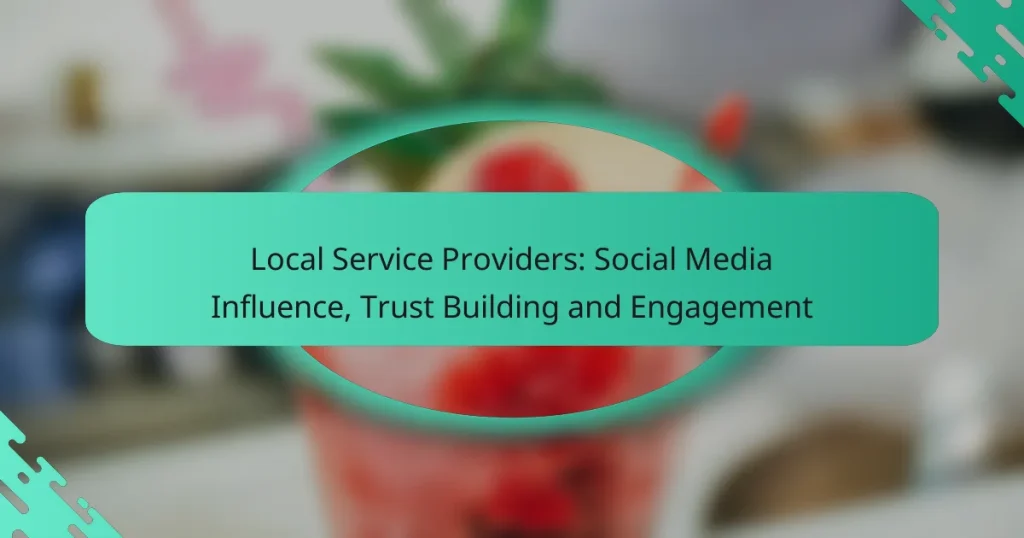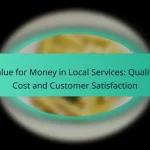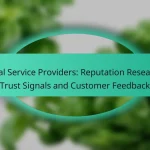Local service providers can leverage social media to strengthen their connection with the community, enhance brand visibility, and cultivate trust among potential customers. By implementing effective strategies such as sharing authentic content and engaging with followers, they can foster loyalty and improve overall brand perception. Additionally, measuring success through engagement metrics and customer feedback allows these providers to refine their approach and maximize their impact.
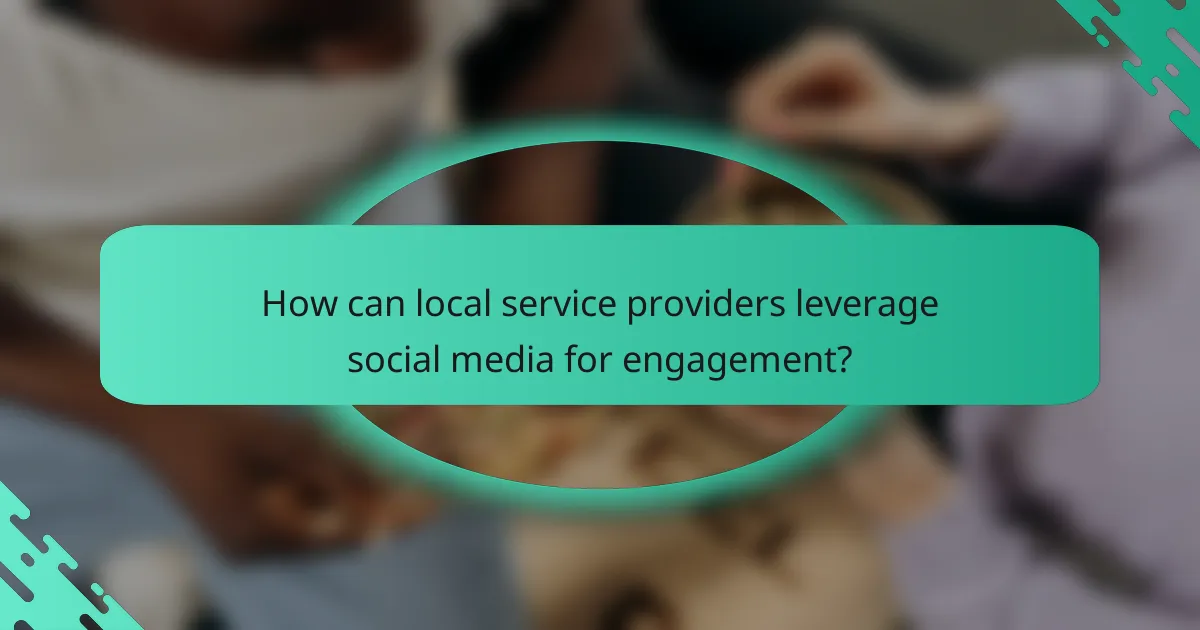
How can local service providers leverage social media for engagement?
Local service providers can effectively use social media to enhance engagement by connecting with their community, showcasing their services, and building trust. By choosing the right platforms and strategies, they can foster relationships that lead to increased customer loyalty and brand awareness.
Utilizing Facebook for community building
Facebook is a powerful tool for local service providers to build a community around their brand. By creating a business page, providers can share updates, promotions, and customer testimonials, which helps in establishing a local presence. Engaging with followers through comments and messages fosters a sense of belonging and encourages repeat business.
Consider hosting local events or promotions and using Facebook Events to invite community members. This not only increases visibility but also strengthens ties with the local audience.
Engaging customers on Instagram with visuals
Instagram thrives on visual content, making it ideal for local service providers to showcase their work. High-quality images and videos of services, behind-the-scenes glimpses, and customer stories can attract attention and engagement. Use relevant hashtags to reach a broader audience and encourage user-generated content by asking customers to share their experiences.
Regularly posting stories and utilizing features like polls or questions can further enhance interaction, keeping your audience engaged and informed about your offerings.
Using Twitter for real-time customer interaction
Twitter is excellent for real-time communication and customer service. Local service providers can use it to respond quickly to inquiries, share updates, and engage in conversations relevant to their industry. This immediacy can significantly enhance customer satisfaction and trust.
Consider using Twitter lists to monitor competitors or local events, and participate in trending conversations to increase visibility. Regularly tweeting tips or insights related to your services can position you as an expert in your field.
Creating LinkedIn connections for B2B services
For local service providers focusing on B2B services, LinkedIn is an essential platform for networking and building professional relationships. Creating a strong company profile and sharing industry-related content can attract potential clients and partners. Engaging with other businesses through comments and shares can expand your reach.
Consider joining relevant LinkedIn groups to connect with other professionals and participate in discussions. This not only enhances visibility but also establishes credibility within your industry.

What strategies build trust on social media?
Building trust on social media involves consistent engagement, transparency, and showcasing authenticity. Effective strategies include sharing customer testimonials, responding promptly to inquiries, and providing behind-the-scenes content that humanizes your brand.
Showcasing customer testimonials
Customer testimonials serve as powerful endorsements that can significantly enhance trust. Sharing positive feedback from satisfied clients on social media can influence potential customers’ perceptions and decisions.
Consider using a mix of text, images, and video testimonials to create engaging content. Highlight specific results or experiences to make testimonials more relatable and impactful.
Responding promptly to inquiries
Quick responses to customer inquiries demonstrate that you value their time and opinions, which helps build trust. Aim to reply to messages and comments within a few hours, if possible, to show your commitment to customer service.
Utilize automated responses for common questions but ensure that personal follow-ups are made for more complex inquiries. This balance helps maintain engagement while providing timely assistance.
Sharing behind-the-scenes content
Behind-the-scenes content allows customers to see the human side of your business, fostering a sense of connection and trust. Sharing images or videos of your team at work, your production process, or company events can make your brand more relatable.
Consider using stories or live videos to give real-time insights into your operations. This transparency can help demystify your brand and encourage customer loyalty by showing the effort and care that goes into your services.
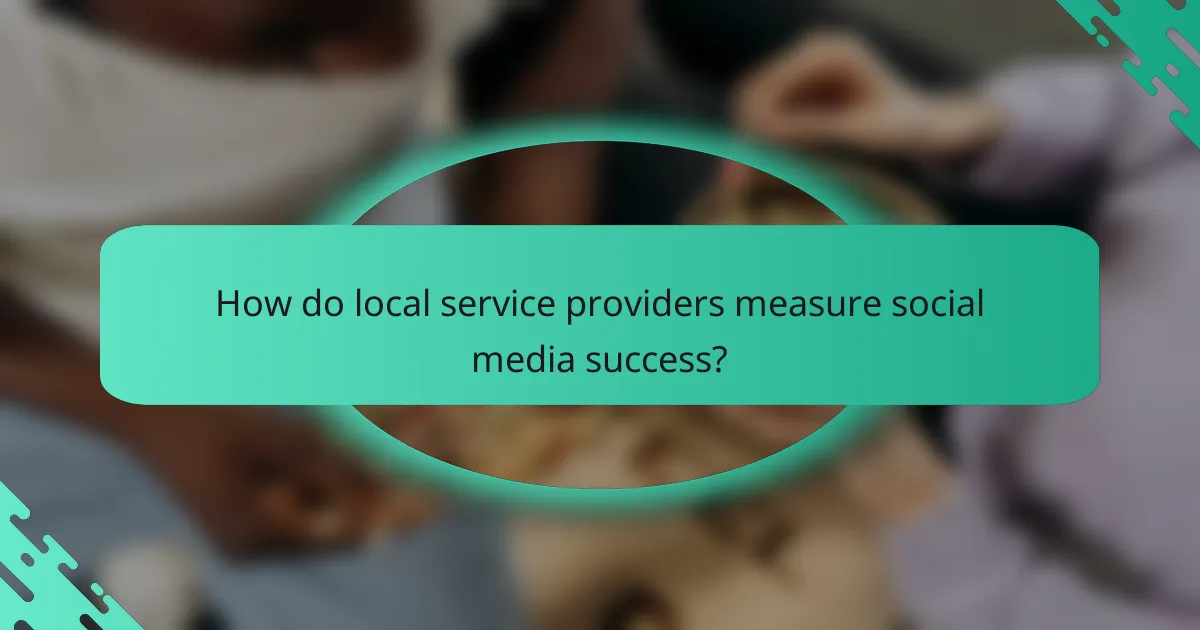
How do local service providers measure social media success?
Local service providers measure social media success through various metrics that reflect engagement, conversion, and brand perception. Key indicators include tracking engagement metrics, analyzing conversion rates, and monitoring brand sentiment to understand their social media impact.
Tracking engagement metrics
Engagement metrics are crucial for assessing how audiences interact with content on social media. Providers typically look at likes, shares, comments, and overall reach to gauge interest and participation. A good practice is to aim for an engagement rate of around 1-3% for posts, which indicates a healthy level of interaction.
Tools like Facebook Insights or Instagram Analytics can help local service providers track these metrics effectively. Regularly reviewing these statistics allows businesses to adjust their content strategies to better resonate with their audience.
Analyzing conversion rates
Conversion rates measure how effectively social media efforts lead to desired actions, such as bookings or inquiries. Local service providers should set clear goals, like increasing website visits or appointment scheduling, and track how many of these actions result from social media interactions. A conversion rate of 2-5% is often considered a good benchmark for service-oriented businesses.
Using tools like Google Analytics can help in attributing conversions to specific social media campaigns. Providers should regularly assess these rates to identify successful strategies and areas needing improvement.
Monitoring brand sentiment
Brand sentiment reflects how customers perceive a business based on social media interactions. Local service providers can monitor sentiment through comments, reviews, and direct messages to gauge public opinion. Tools like sentiment analysis software can automate this process, providing insights into whether feedback is predominantly positive, negative, or neutral.
Regularly assessing brand sentiment helps providers address customer concerns promptly and adjust their messaging accordingly. Engaging with customers who leave feedback—whether positive or negative—can enhance trust and loyalty in the local community.
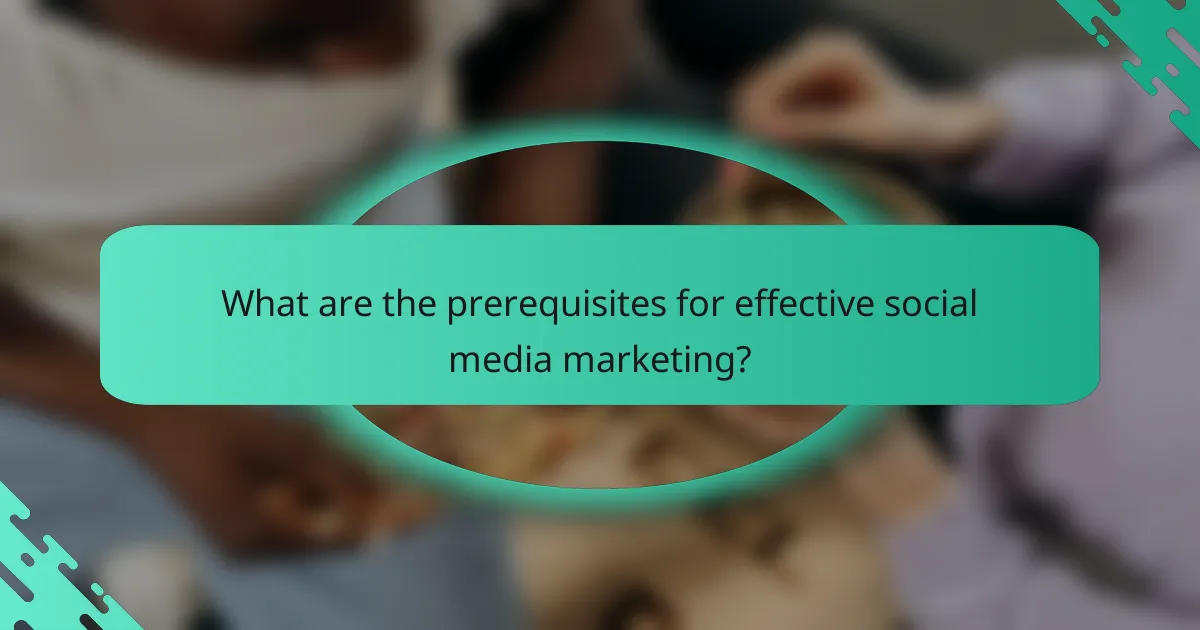
What are the prerequisites for effective social media marketing?
Effective social media marketing requires a clear understanding of your target audience and well-defined marketing goals. These elements help shape your strategy and ensure that your efforts resonate with potential customers.
Defining target audience demographics
Identifying your target audience demographics is crucial for tailoring your social media marketing efforts. Consider factors such as age, gender, location, interests, and purchasing behavior. For example, a local coffee shop might focus on young adults aged 18-30 in their city, while a retirement community may target older adults in the surrounding area.
Utilize tools like Facebook Insights or Google Analytics to gather data on your current audience. This information can help refine your messaging and content to better engage your intended demographic.
Setting clear marketing goals
Establishing clear marketing goals is essential for measuring the success of your social media campaigns. Goals should be specific, measurable, achievable, relevant, and time-bound (SMART). For instance, a goal could be to increase your follower count by 20% within six months or to boost engagement rates by 15% over the same period.
Regularly review and adjust your goals based on performance metrics. This ensures that your social media strategy remains aligned with your overall business objectives and adapts to changing market conditions.
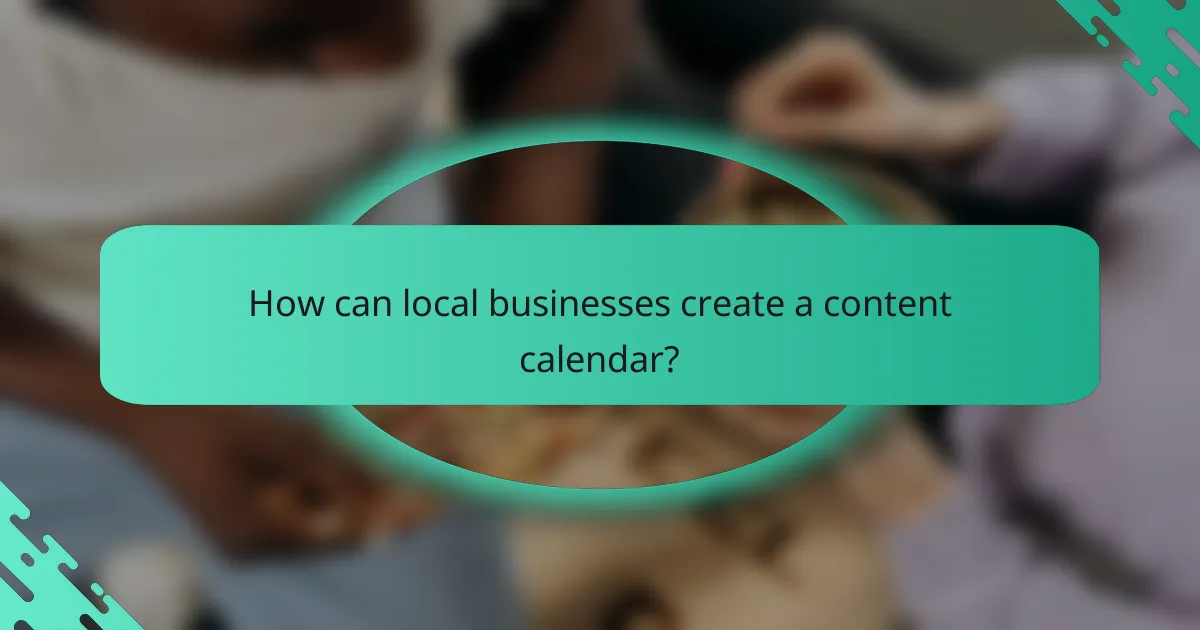
How can local businesses create a content calendar?
Local businesses can create a content calendar by outlining their marketing goals, identifying key dates, and planning content that aligns with their audience’s interests. This structured approach helps ensure consistent engagement and maximizes the impact of seasonal promotions.
Planning seasonal promotions
Seasonal promotions are crucial for local businesses to attract customers during peak times. Start by identifying holidays and local events that resonate with your target audience, such as Christmas, local festivals, or back-to-school season.
Once you have your key dates, brainstorm content ideas that highlight your products or services. For example, a bakery might offer special holiday-themed treats or discounts during a local fair. Schedule these promotions in advance to ensure timely execution.
Scheduling regular posts for consistency
Consistency in posting is vital for building trust and engagement with your audience. Aim to post regularly, whether that’s daily, weekly, or bi-weekly, depending on your resources and audience preferences.
Utilize tools like social media schedulers to automate your posts. This allows you to maintain a steady flow of content without the stress of last-minute updates. Consider creating a mix of promotional, educational, and entertaining posts to keep your audience engaged.
